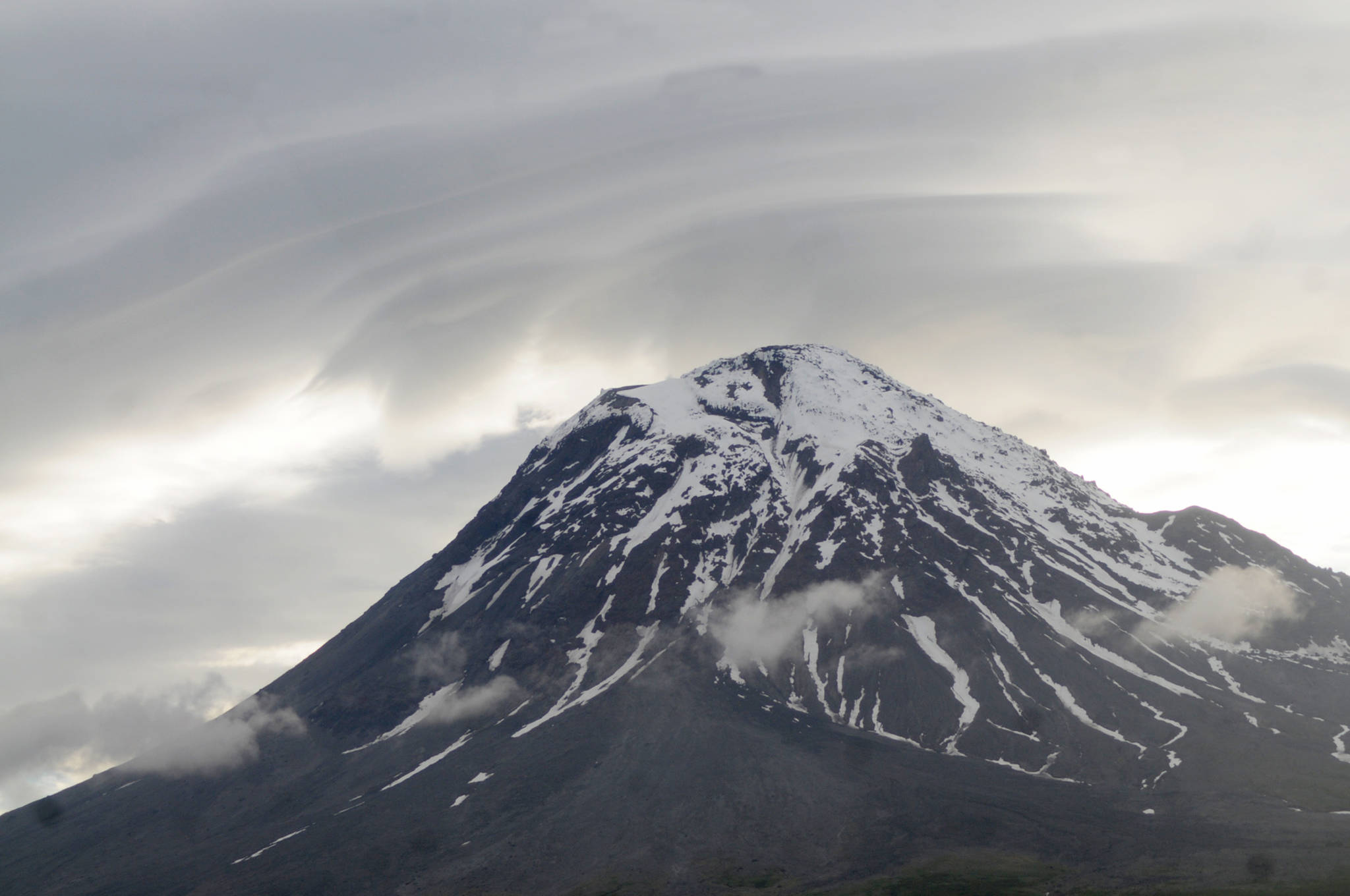The nearest town is 37 miles of wilderness and ocean away from the shores of Augustine Island, but the island still brims with life.
In early June, birdsong whistles through the air from birds hidden in the low alder thickets. Fresh rain drips from the leaves onto the grasses, rolling downhill into the low lying areas where insects hum. On the rocky coasts that overlook deep tidepools alive with hermit crabs, pairs of oystercatchers let out raucous warnings to stay away from their nests. Seagulls wheel over a wide inlet where harbor seals lounge and otters periscope above the glassy water.
There’s little disturbance other than the wind as a skiff delivers people traveling with the Center for Alaskan Coastal Studies to the shore in small groups. Slowly they spread out along the shores, some looking for marine debris washed up along the beaches, some simply observing the environment and exploring the remote island.
Augustine Island is one of the most remote places in Cook Inlet, with no established landings and no residents.
The island is made up of little more than a volcano that towers 4,000 feet overhead and the surrounding debris from eruptions over thousands of years.
From the beach of a small island separated by a channel from the main island, Homer Mayor Bryan Zak pointed up at the mountain’s dome.
“Looks like it’s smoking,” he said.
The rest of the volunteers gathered around to tried to distinguish the clouds around the mountain’s face from smoke rising from its dome. As the weather cleared and the sun emerged but the cloudy veil hung around the mountain’s face, it became clear that the volcano was in fact smoking, which active volcanoes regularly do.
The group spent two days exploring and collecting marine debris from the edges of the remote island. They are among a handful of occasional visitors to the uninhabited island each year, the others being a variety of scientists making observations about the volcano.
The Alaska Volcano Observatory, a joint project of the U.S. Geological Survey, the University of Alaska Fairbanks’ Geophysical Institute and the Alaska Division of Geological and Geophysical Surveys, maintains a network of seismometers and tiltmeters around the volcano, occasionally performing site visits. The University of Alaska Fairbanks holds an Interagency Land Management Assignment that lasts through 2025, primarily to detect eruptions and secondarily to do research.
Otherwise, there’s not a lot of research done on the ecology of the island itself. USGS doesn’t do any wildlife surveys other than anecdotal observations, said USGS Alaska Science Center Communication and Outreach Coordinator Yvette Gillies. Neither does the U.S. Fish and Wildlife Service, and there are no publications related to Augustine Island specifically in the Alaska Department of Fish and Game’s online publication database.
The Alaska Department of Natural Resources’ Division of Oil and Gas did provide a high-level overview of the island before issuing a geothermal energy lease sale there in 2013.
Most of the island is moist tundra without any large mammals, according to a 2013 final lease decision from then-DNR Commissioner Dan Sullivan.
Red foxes run around the lowlands, but otherwise, animal tracks are spare.
The coasts are mostly shallow with rocky headlands and intertidal areas, and the well-known storms of Kamishak Bay can sweep the island. Nearby, commercial fishermen net for salmon passing through Cook Inlet in the summer, dredge for weathervane scallops and collect clams from the west side of Cook Inlet.
The shores of the small island where the Center for Alaskan Coastal Studies group landed were littered with the broken shells of various types of clams and mussels as well as partial and complete northern sea otter skeletons. No critical habitat has been identified within the area for marine mammals, but beluga whales, otters, Steller sea lions, harbor porpoises and harbor seals have all been identified in the area, according to the DNR decision.
“The unique physical characteristics of the Augustine Island area support diverse habitats with a rich wildlife assemblage,” the decision states.
The decision approved the geothermal energy lease sale and one lease was sold on the island in 2013 on a 10-year lease cycle. Today, however, there isn’t any geothermal activity going on in the state, said Division of Oil and Gas Spokeswoman Diane Hunt.
“I can only say we don’t have anything active right now,” she said.
The state has also issued geothermal energy leases on Mt. Spurr on Cook Inlet’s west side.
However, the nearest power plant is in Nikiski, more than 100 miles away.
“Developing geothermal resources requires that economics are favorable for power generation,” the decision document states. “Siting, permitting and customer markets must overcome the risk of bearing the high exploration and capital investments in the initial development phases … Power generation from geothermal resource in Cook Inlet could augment existing power sources.”
For now, the island remains quietly undeveloped except for the volcanic activity monitoring stations.
Reach Elizabeth Earl at elizabeth.earl@peninsulaclarion.com.

